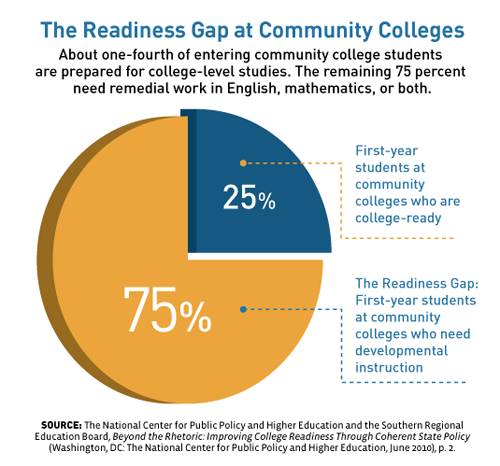Next year I will be the parent of a school-age child. Wow that makes me feel old! From my son’s experiences in pre-school I can already tell that his education is going to be vastly different from my own. But how different? I imagine that I will be uttering statements like, “I don’t remember learning that,” or “Wow, I wish I had learned this when I was in school.” Some of these will undoubtedly occur because there were no educational standards in place when I started school 27 years ago. Sure, everyone learned the basics of English and math. But each student’s education varied, not only from state to state, but from school district to school district, and often, from teacher to teacher. There were no state or federally adopted educational standards to ensure universal equality in learning
So, what is different now?
There are many differences between my education and the education of a school-age child today. For example:
- Standards. My child’s education will be structured by standards that govern what skills will be taught and when.
- Technology. Technology is now ubiquitous, so it will have a big impact on how my child is educated.
- Reading. Standards now call for a balance of informative text and literature with increased text complexity for both.
- Conceptual Understanding. My child will not just be expected to solve a problem, but to understand the concept presented, know what skills to use, and justify his choices.
Raise your hand if you know what a standard is
The Common Core State Standards (CCSS) are a set of educational standards that have been adopted by 42 out of 50 states in the U.S. This is important because it means that the majority of children should be at the same readiness level for life after high school, whether a career or college. As I said before, there were no universal standards when I started school. In talking with my husband, I know that I did not learn some of the things that he did, even though we lived in the same town growing up. California did not adopt a set of standards until 1997 at which point I was already a freshman in high school. So, having standards-based education from the ground up was not a reality. My son will have a universal standards-based education from the start. He will learn things like the technical structure of a sentence, and how specific words work within it. It took me a long time to learn the structure of a sentence. It was not until I took Latin in college that I developed complete understanding of all of the components of a sentence. There are now standards in place that call for learning all of these components in a K-12 education.
“I’ll take technology for a $1,000, Alex.”
My son’s education will be full of technology. At the age of five he already knows how to use a tablet. When I was in school we were lucky if the classroom had one Apple IIe computer with a floppy drive.Playing Oregon Trail on that Apple IIe is one of my favorite memories from third grade, but that is about all we used computers for. Now, technology is being incorporated into education in a wide variety of ways that simply weren’t possible when I was in school. When I was growing up, computers were new; they were not in every home or even in every classroom. The age at which computers were available to students varied widely. My husband had a home computer in the fifth grade, whereas I did not have one until I reached college. This will not be an issue for my son and the children of his generation. They are what is often referred to as digital natives. My son will not only have access to technology at home but at school as well.
In the CCSS, students will be expected to use technology to assist in writing and researching. One example of a standard that integrates technology in the classroom is this:
- Grade 1 CCSS.ELA.LITERACY.W.1.6 With the guidance and support from adults, use a variety of digital tools to produce and publish writing, including collaboration with peers.
Even in learning the basics of writing in first grade, students will be expected to incorporate digital tools. This standard asks that students be able to publish (format and print) the writing that they have created. This means they need to develop an understanding of the process of entering information into the computer and sending it to a printer. Students will also take exams on computers. Smarter Balanced and Partnership For Assessment Of Readiness For College and Careers (PARCC) are the two companies that develop the assessments for the CCSS. Both companies have generated computer-based exams, so students are expected to be familiar with the basics of computer use.
Not just story books anymore
What my son will be required to read has changed as well. This Common Core site explains what the CCSS expects children to read. My son will be required to read an equal 50/50 split of narrative and informative texts in grades K to 5. In grades 6 to 8 the percentages change to 45% narrative and 55% informative texts. In grades 9 to 12 the percentage changes again to 30% narrative and 70% informative. Under the CCSS the complexity of the text is also increased. The reason for these changes is to address what is known as a reading gap. This is the gap between the reading ability of high school graduates and the expected ability to read in college or a career. 
The guidelines are intended to include all subjects, not only English and math, but also science, history/social studies and technical subjects.
Mastering the concepts
My son will learn the ins and outs of math and English under CCSS. He will learn mathematical concepts that will help him build skills to answer questions in the future. By practicing these skills, my son will develop fluency in math. The way that Common Core teaches these skills is through deep conceptual understanding. My child will develop a conceptual understanding of a subject by exploring all of the possible ways to find an answer. There may be one right answer to a question but there is usually more than one way to solve the problem. The reason for this approach is so that my child will be able to look at a real-world situation and, with his multiple understandings of the skill he knows, he will decide on the best route towards a solution. When I was in school, there were not many real-world applications for math. It was only about getting the right answer to the equation. When I worked as a cashier in college I quickly learned simpler ways to think about adding and subtracting that I never learned in school. For example, I began grouping change into tens and hundreds to do the math more quickly. All of this is covered explicitly in the CCSS:
- CCSS.MA.CONTENT.1.NBT.B.2.A Numbers can be thought of as a bundle of ten ones called a “ten.”
My son will learn this in the first grade. He will reach a point of ease and fluency with numbers that I achieved much later in life. With deep conceptual knowledge comes the ability to do more complex problems. In math, my son will have the conceptual knowledge to solve a problem in multiple ways. Starting with an answer and working backwards to find unknown starting points builds fluency, ensuring my son has complete conceptual knowledge by approaching a skill from another direction. This process will prepare him for real–life situations where he may only have partial information to work with. Through CCSS he will learn how to examine his work and the work of others, find mistakes if there are any, fix them and then explain his reasoning. That will all be possible because of the deep conceptual knowledge gained through CCSS.
I am prepared for the journey
I may not be prepared for my son to grow up, but with all of this information that I have learned about Common Core, I will be prepared for his K-12 education. It seems like it was only yesterday I was just helping my son learn to walk and talk. Now he will be taking his first steps on an entirely different journey. It’s a journey that I now feel prepared to help him with because I have tried to understand Common Core.




